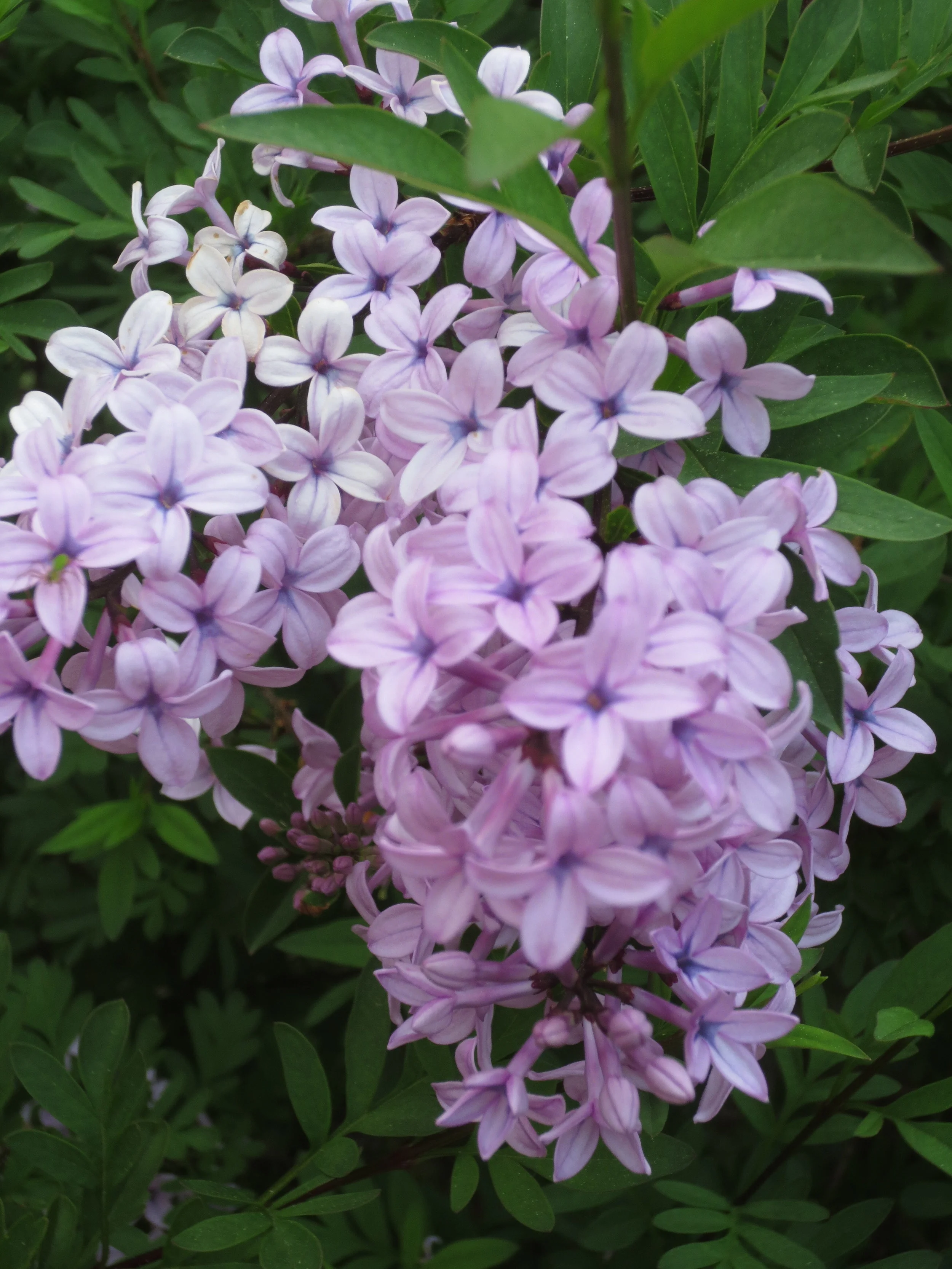One of the advantages of living in balmy South Carolina is our long growing season and mild winters. That same weather creates challenges in growing peonies and lilacs, apples and cabbages. I was lucky enough to inherit a cut-leaf Lilac (Syringa laciniata) that was planted decades ago by my husband’s grandmother. The finely divided leaves resemble marigolds more than other lilacs, and give the shrub a soft texture.
This deciduous shrub is described as graceful but I find that it becomes a bit ungainly with age unless it is pruned to generate new growth. It can reach heights of eight feet or so, with an equal spread. Clusters of fragrant, light purple flowers bloom in spring around the same time as daffodils. Any shaping should be done soon after the bloom period is complete. This is also a good time to take cuttings. Removal of dead blooms before the plant sets seeds will result in better blooming in the following year. Fall color is an unimpressive yellow.
Cut-leaf lilac is propagated from softwood stems, not bright green and flexible or dark brown and brittle. Use a rooting hormone for best results. To improve survival rate, the rooted cuttings should remain in a greenhouse or protected location at least a year before being planted out into the landscape. Several of the plants I started from cuttings have exceeded the size of the mother plant. Plants can also spread themselves by suckering. Suckers may be removed to limit spread.
It is difficult to find Syringa laciniata for sale in nurseries, but ‘Miss Kim’ lilac (Syringa persica) is widely available. Cut-leaf lilac is heat tolerant and mildew resistant. It is not troubled by insects or diseases, and is rarely browsed by deer. Butterflies and bees flock to its fragrant blooms. It performs best in full sun. Lilacs prefer neutral to slightly alkaline soil, so add lime if your soil test indicates acidity.
How I wish you could “scratch and sniff” to enjoy the fragrance!
This “mother” plant is at least fifty years old. It has been the source of numerous cuttings, now larger than the original.


